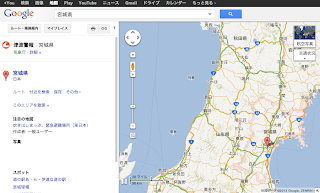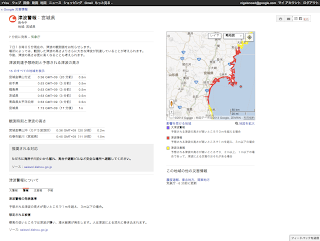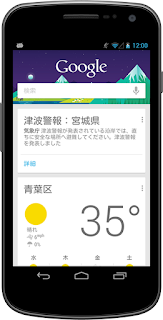Public Alerts for Google Search, Google Now and Google Maps available in Japan
March 7th, 2013 | Published in Google Earth
With nearly 5,000 earthquakes a year, it’s important for people in Japan to have crisis preparedness and response information available at their fingertips. And from our own research, we know that when a disaster strikes, people turn to the Internet for more information about what is happening.
With this in mind, we’re launching Google Public Alerts today in Japan—the first international expansion of a service we debuted last year in the United States. Google Public Alerts is a platform designed to provide accurate and relevant emergency alerts when and where you’re searching for them online.
Relevant earthquake and tsunami warnings for Japan will now appear on Google Search, Google Maps and Google Now when you search online during a time of crisis. If a major earthquake alert is issued in Kanagawa Prefecture, for example, the alert information will appear on your desktop and mobile screens when you search for relevant information on Google Search and Google Maps.

Example of a Google Search result on a tablet showing a tsunami warning

Example of a tsunami warning on Google Maps

Example of how a tsunami alert would work in Fukushima

Example of a tsunami warning card on Google Now
We hope our technology, including Public Alerts, will help people better prepare for future crises and create more far-reaching support for crisis recovery. This is why in Japan, Google has newly partnered with 14 Japanese prefectures and cities, including seven from the Tōhoku region, to make their government data available online and more easily accessible to users, both during a time of crisis and after. The devastating Tōhoku Earthquake struck Japan only two years ago, and the region is still slowly recovering from the tragedy.
We look forward to expanding Google Public Alerts to more countries and working with more warning providers soon. We also encourage potential partners to read our FAQ and to consider putting data in an open format, such as the Common Alerting Protocol. To learn more about Public Alerts, visit our Public Alerts homepage.
Post content